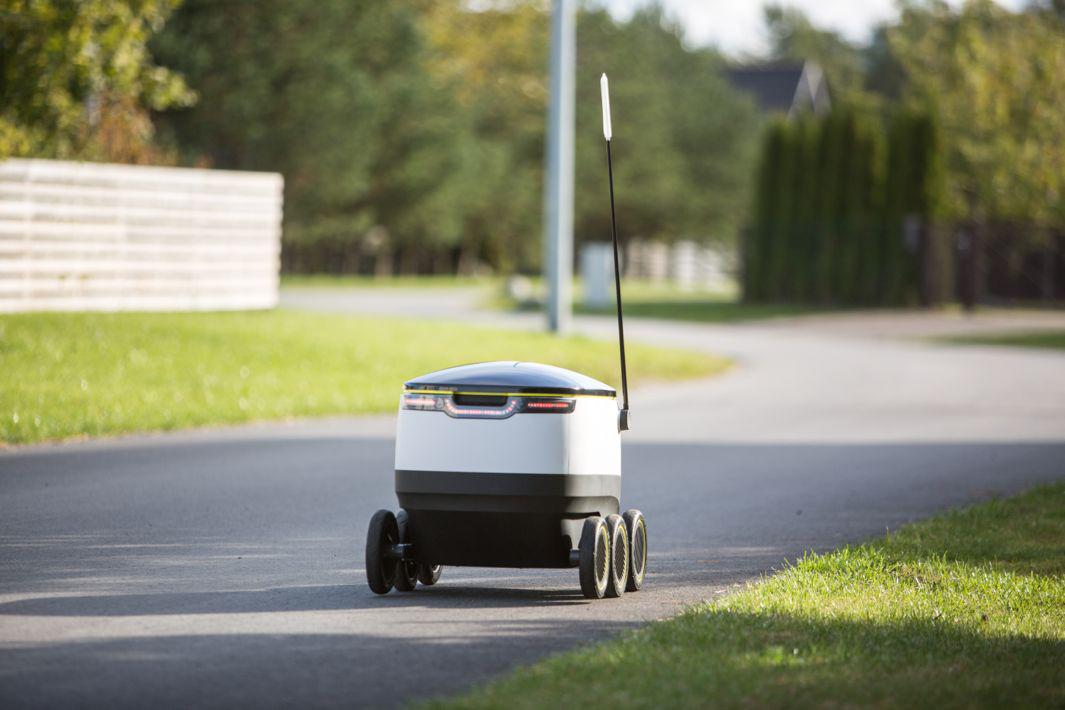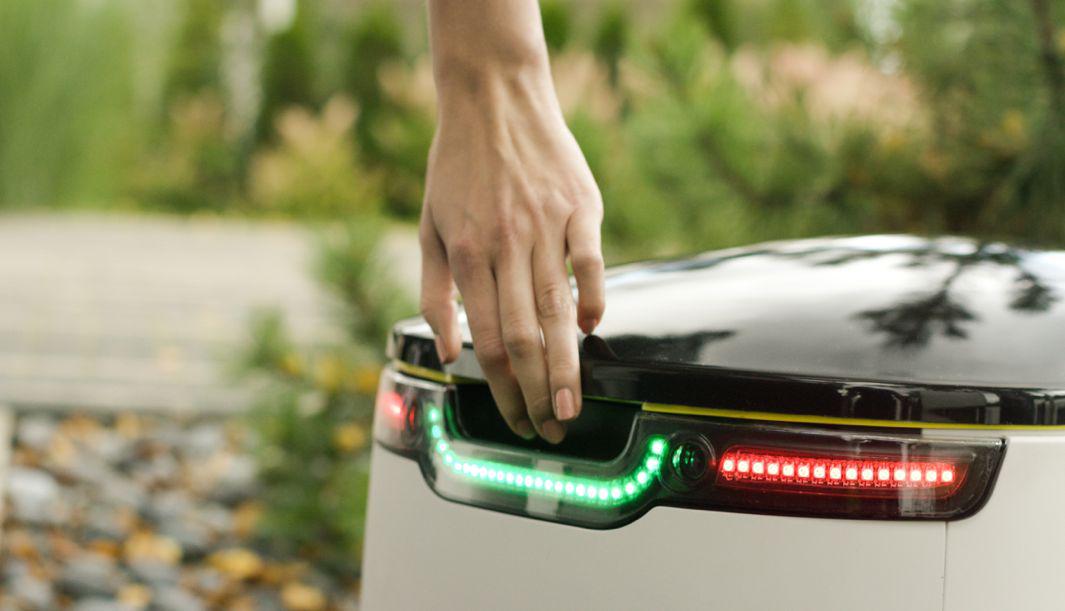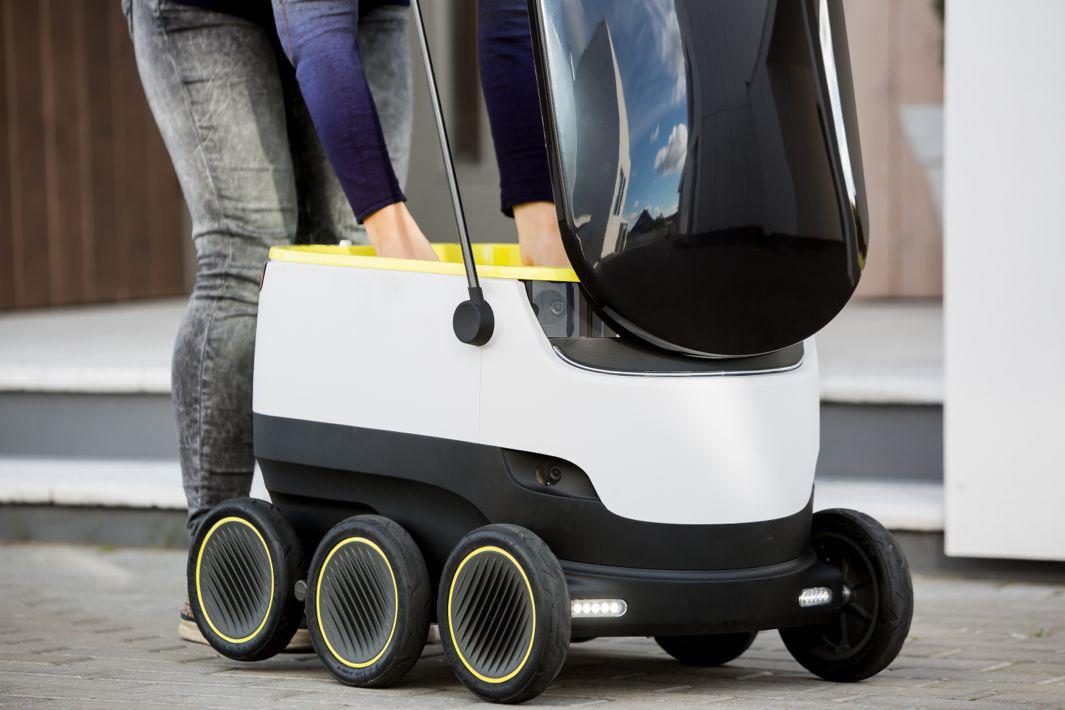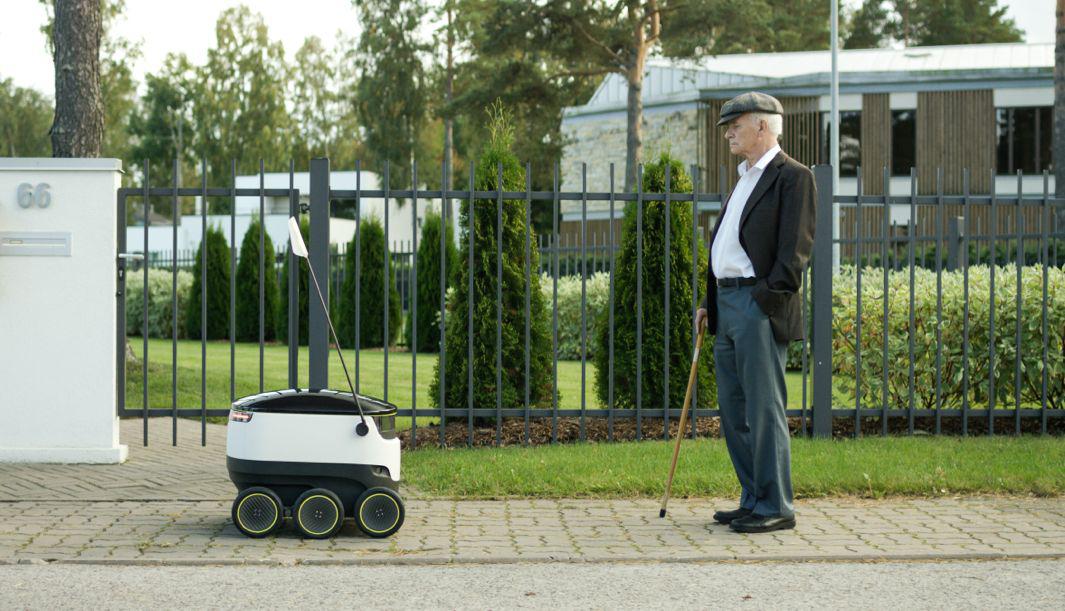Depending on where you live, navigating city sidewalks can feel like an unchoreographed dance performance or parkour as you try to get where you’re going without clipped elbows or aggravated assaults on your patience.
But if a new company has its way, you will soon be sharing the pavement with self-driving delivery robots that don’t fly like their drone cousins but roll along at a brisk walking pace of 4 miles per hour. These lightweight, low-cost, CO2-emission-free earthbound delivery robots are designed to make transporting packages and groceries cheaper for individuals and businesses.
Launched on Monday by former Skype co-founders Ahti Heinla and Janus Friis, London- and Tallinn, Estonia–based startup Starship Technologies was founded “to fundamentally improve local delivery of goods and groceries, making it almost free,” according to a press release. (They aren’t the only ones hoping to make sidewalk delivery robots a reality, like this startup that has partnered with DHL.)

Courtesy of Allan Martinson/Echo
“Our vision revolves around three zeroes—zero cost, zero waiting time and zero environmental impact,” Heinla said in the release. “We want to do to local deliveries what Skype did to telecommunications.”
The company says that the robots can carry the equivalent of two grocery bags, delivering them within five to 30 minutes from a local hub or retail outlet, cutting down last-mile delivery costs. A real-time mobile app will allow a shopper to track his or her robot’s location and unlock goods on arrival.
Heinla said in an email via a company representative that the company plans to run a trial in London in the first half of 2016 with plans to enter the U.S. and elsewhere.

Courtesy of Allan Martinson/Echo

Courtesy of Allan Martinson/Echo
Drones might still have sinister connotations, but sidewalk-hogging delivery robots sound like a pedestrian nightmare. What will prevent technophobes with sidewalk rage from kicking them out of the way? Who will protect an unaccompanied sidewalk robot from getting robbed?
Heinla said in the email that each robot has sensors and cameras for navigational purposes. “Much like a human would sense potential collisions and velocity of moving objects,” he said, “it detects obstacles and halts at any sign of interference.”* The Wi-Fi–connected robot drives autonomously 99 percent of the time in a local area that will have been mapped carefully and is tracked by a human operator monitoring its journey. The human can “see at all times through the robot’s eyes and can even have two-way conversations with those around it,” he said, able “to send for authorities if needed.”
He added that “initial social acceptance testing” over some 62 miles of sidewalk and past approximately 5,000 pedestrians showed that on average, 80 to 90 percent of passersby showed “no reaction to the robot whatsoever,” while 10 to 20 percent “expressed a positive reaction.”
Correction, Nov. 3, 2015: This post originally referred to Ahti Heinla as “she.” Heinla is male.
